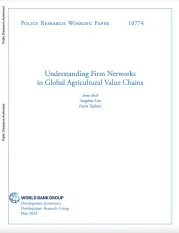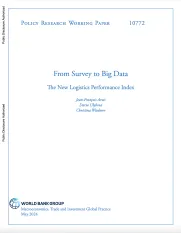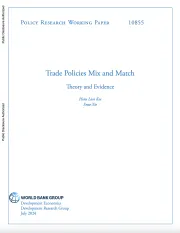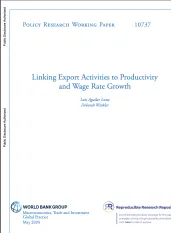
World Development Report 2020: Trading for Development in the Age of Global Value Chains
For over three decades, international trade and global value chains have driven growth and poverty reduction. Yet recent shocks have revealed vulnerabilities in trade-dependent economies. What are the trade policies that can build resilience to these types of shocks?
Related content
Policy Research Working Papers
This paper explores the evolution and resilience of global value chains (GVCs) in the agrifood sector, which intensified since the 1994 Uruguay Round Agreement. Using unique data from the FactSet database, along with Fortune 500 lists, the comprehensive analysis of approximately 17,500 agribusiness…
Policy Research Working Papers
The World Bank has published the Logistics Performance Index since 2007. The Logistics Performance Index used to be based exclusively on perception ratings from a global survey of logistics professionals. In 2023, it was augmented with key performance indicators derived from massive global…
Policy Research Working Papers
This paper studies the relationship between tariffs and non-tariff measures (NTMs) to understand the recent trade tensions with governments mixing trade policies, such as the European Union imposing NTMs on top of the tariffs on China’s electric vehicles. Results based on the latest bilateral-…
Course
Through a mix of lectures, interactive seminars, and exercise sessions, participants will explore the latest trends and recent work in the active research field of trade and climate change. Topics covered in depth include carbon leakage and countermeasures; the use of quantitative trade models in…
Event
International trade has historically been a force for development and poverty reduction. But trade is increasingly viewed as contributing to inequality, risk, and environmental degradation. As a result, protectionism is on the rise. To discuss the role of international trade on development outcomes…
Policy Research Working Papers
This paper examines the relationship between trade and job quality, using productivity and wage rate data for export and non-export activities in a sample of 60 countries across all income levels and 45 sectors spanning the whole economy from 1995–2019. First, the analysis finds that workers…






